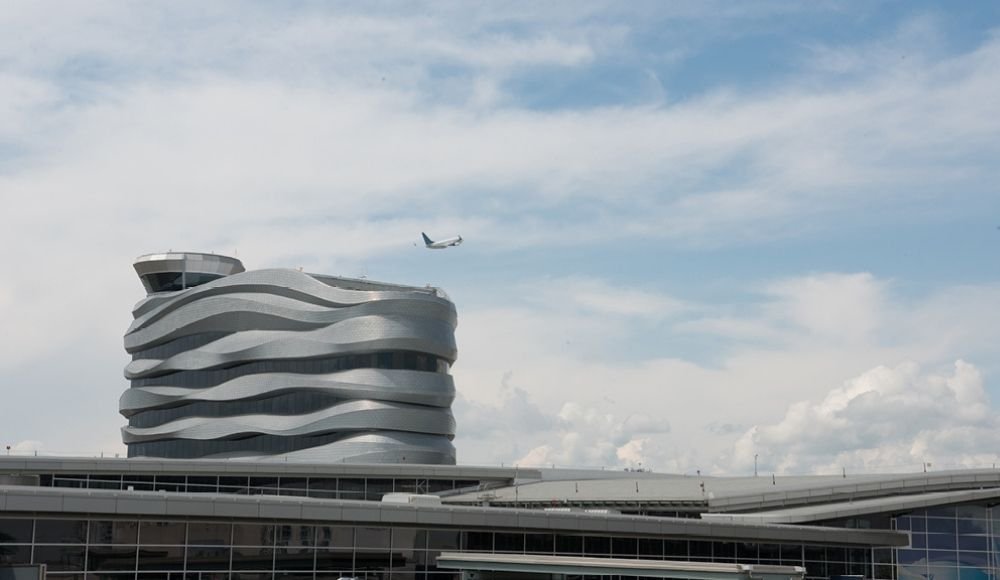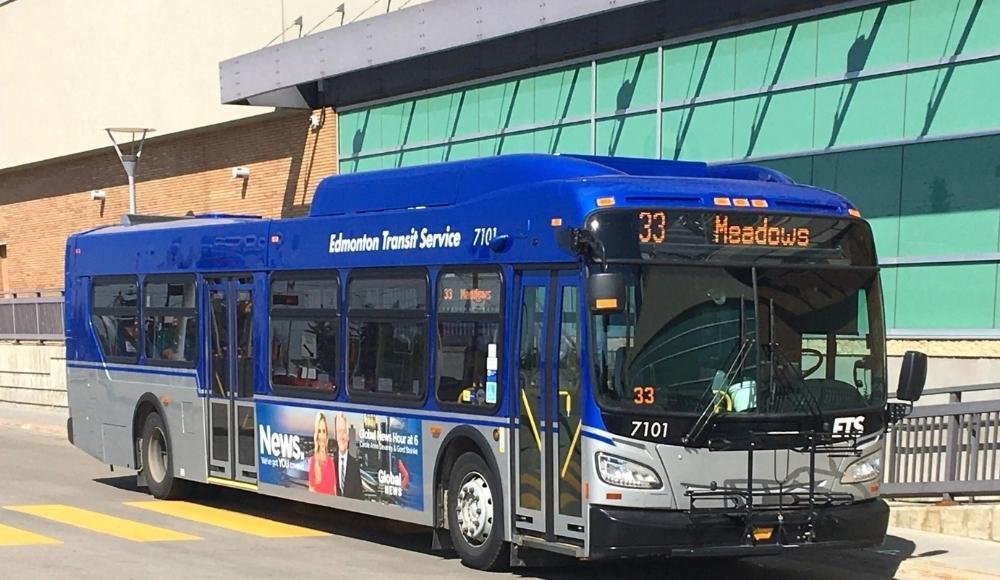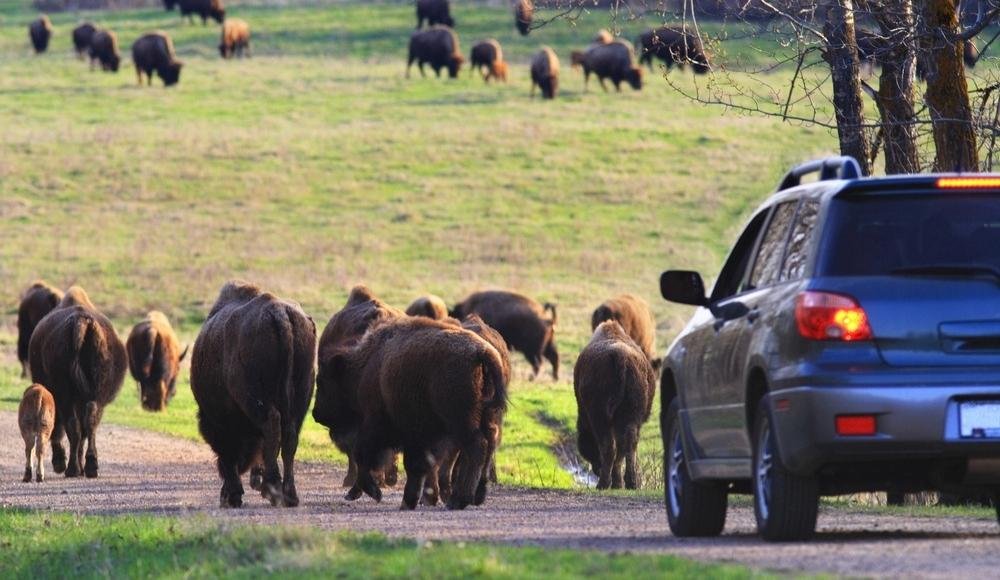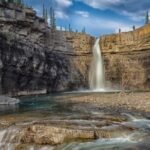Welcome to Edmonton, the vibrant capital of Alberta, and a must-see destination in Western Canada. Known for its rich history and modern flair, Edmonton offers the perfect blend of urban excitement and natural beauty. As Alberta’s capital, the city plays a key role in the province’s political and cultural landscape, but it’s also famous for being “Canada’s Festival City.” Edmonton lives up to this nickname by hosting over 50 festivals throughout the year, celebrating everything from music and food to art and theatre.
If you’re looking for a place where culture thrives, Edmonton won’t disappoint. The city’s thriving arts scene includes world-class galleries, local artisans, and live performances that bring its streets to life. Whether you’re exploring the stunning North Saskatchewan River Valley or enjoying the buzz of Whyte Avenue, Edmonton’s charm is irresistible. In this blog post, I’ll Walk you through the ultimate Edmonton Travel guide, the best things to see and do, and share insider tips to help you make the most of your visit to this incredible city.
Brief History of Edmonton
Edmonton’s origins trace back thousands of years to Indigenous peoples who lived in the area. In 1795, Edmonton House, a fur trading post, was built by the Hudson’s Bay Company. The town grew slowly until 1905, when it became the capital of Alberta, gaining city status in 1906. By 1914, the population had surged to nearly 78,000, spurred by economic growth and the founding of the University of Alberta.
The discovery of oil in Leduc County in 1947 sparked another boom, transforming Edmonton into a major energy hub. The city expanded rapidly, developing suburbs and malls. Today, with a population of over 1.1 million people (as of 2023), Edmonton is known for its strong energy sector, top-tier research institutions like the University of Alberta, and National Institute for Nanotechnology, and its role as Alberta’s political and cultural center
How to Get to Edmonton
Air Travel
Flying into Edmonton is a breeze thanks to the Edmonton International Airport (YEG). It’s the main airport serving the city, and it connects to several major airlines like Air Canada, WestJet, and Delta. There are direct flights from many Canadian cities like Toronto, Vancouver, and Calgary, as well as international destinations like the U.S. and Europe. Once you land, getting to downtown Edmonton is simple. The airport is about 30 minutes from the city center, and you can grab a taxi, shuttle, or even rent a car right at the terminal.
Road Travel
If you’re driving into Edmonton, the roadways are smooth and well-connected. The city is at the crossroads of two major highways: the Yellowhead Highway (Highway 16) and Highway 2. The Yellowhead Highway runs from east to west, perfect for travellers coming from places like Jasper or Saskatoon. Highway 2 is a north-south route that connects Edmonton to Calgary and southern Alberta. Driving to Edmonton can be a fun way to take in Alberta’s wide-open landscapes before you hit the hustle and bustle of the city.
Bus Travel
One of the most popular ways to get to Edmonton from Calgary and other cities is by bus. Companies like Red Arrow and Ebus offer reliable and comfortable bus services between Calgary and Edmonton. These buses are equipped with comfy seats, Wi-Fi, and power outlets, making your journey pleasant and stress-free. The trip usually takes around 3 hours and drops you off right in downtown Edmonton, close to shopping, hotels, and attractions. Red Arrow and Ebus also have routes from other Alberta towns like Red Deer, Lethbridge, and Fort McMurray.
[read more]
Read Also: 12 of the best free things to do in Edmonton
How to get around in Edmonton
Once you’ve arrived in Edmonton, getting around the city is easy due to its variety of transportation options. Below are some of the best options:
Edmonton Transit Service (ETS)
The Edmonton Transit Service (ETS) is the city’s main public transit system, and it includes both buses and the Light Rail Transit (LRT). The LRT is a great way to travel quickly through the city, with two main lines, the Capital Line and the Metro Line. These lines connect you to major spots like downtown Edmonton, the University of Alberta, and Rogers Place. If you plan to visit areas outside of the LRT route, the bus network is extensive and covers almost every neighbourhood. You can buy tickets or passes at LRT stations or use the Arc Card, a convenient electronic pass for multiple rides.
Driving and Parking
If you prefer driving, Edmonton is very car-friendly, with well-maintained roads and plenty of parking spots. You can easily rent a car at the Edmonton International Airport or in the city. Edmonton’s roads are wide and designed to handle traffic, making it simple to navigate the downtown core and surrounding neighbourhoods. There are several parking garages and lots available, especially near shopping centers and tourist spots like the West Edmonton Mall and Old Strathcona.
Ridesharing and Taxis
For a more flexible option, services like Uber and Lyft operate in Edmonton. They’re perfect if you need a quick ride from your hotel to a nearby attraction. You can also hail a taxi, though ridesharing apps are often more convenient. Both services are widely available, and wait times are usually short.
Here are some of the cab companies to explore:
- Yellow Cab: +1 780-462-3456.
- Capital Taxi: +1 780-423-2425.
- Co-op Taxi: +1 780-425-2525.
- Barrel Taxi: +1 780-489-7777.
- Prestige/Checker Cab: +1 780-484-888
Biking and Walking
Edmonton is also becoming more bike-friendly, with bike lanes in key areas like Whyte Avenue and downtown, and other neighbourhoods. If you’re visiting in the warmer months, consider renting a bike or bringing your own to explore the beautiful North Saskatchewan River Valley. The city is very walkable, especially in areas like Old Strathcona and the Downtown Arts District.
Best time to visit Edmonton
Edmonton offers something special in every season, so the best time to visit depends on your preferences.
In spring (March to May), the city wakes up from winter as temperatures start to rise, though it can still be a bit chilly. By May, the parks and gardens are in full bloom. It’s a great time to explore the Muttart Conservatory or walk through the North Saskatchewan River Valley. Spring is quieter, making it ideal for a more relaxed visit.
Summer (June to August) is Edmonton’s most vibrant season, with warm weather and long days. Known as “Canada’s Festival City,” Edmonton hosts events like the Edmonton International Fringe Festival and the Heritage Festival. Outdoor activities like hiking and biking are perfect this time of year, making summer the best season for festival lovers and adventure seekers.
In fall (September to November), cooler temperatures and colourful foliage create a beautiful backdrop for exploring the city. It’s a quieter time after the busy summer, perfect for scenic hikes in the river valley or visiting popular spots like West Edmonton Mall. Fall is also great for taking in the city’s live theatre, music, and food events.
Winter (December to February) transforms Edmonton into a snow-covered wonderland. Outdoor activities like skating, skiing, and snowshoeing are popular, and the city’s clear skies offer a great chance to see the Northern Lights. If you enjoy winter sports or dream of seeing the aurora, winter is the ideal time to visit.
Where to Stay in Edmonton
Edmonton provides you with a variety of accommodations to fit any budget or style.
For a high-end experience, Fairmont Hotel Macdonald is a top choice with stunning views of the North Saskatchewan River Valley and elegant service. Another luxury option is the JW Marriott Edmonton ICE District, offering modern amenities and a prime downtown location near Rogers Place.
If you’re looking for value, Matrix Hotel provides stylish rooms and extras like complimentary breakfast and is located close to downtown. DoubleTree by Hilton West Edmonton is another excellent mid-range hotel near West Edmonton Mall, featuring spacious rooms and a pool.
For budget-friendly stays, HI Edmonton Hostel in the lively Old Strathcona neighbourhood is perfect for backpackers. Affordable hotels like Super 8 by Wyndham and Travelodge offer clean, comfortable rooms at great prices.
If you want something unique, Crash Hotel offers a trendy stay next to Rogers Place, perfect for sports or concert fans.
Must-See Attractions in Edmonton
West Edmonton Mall
The West Edmonton Mall is one of the world’s largest shopping and entertainment centers and is more than just a mall. It’s home to exciting attractions like Galaxyland, an indoor amusement park with thrilling rides, and the World Waterpark, featuring a huge wave pool and water slides. You can also ice skate at the Ice Palace indoor rink or relax at one of the many restaurants and shops. Read more about the attractions in West Edmonton Mall.
Fort Edmonton Park
Step back in time at Fort Edmonton Park, a living history museum that brings Edmonton’s past to life. You can explore historical streets, ride a vintage streetcar, and visit a recreated fur trading fort from the 1800s. It’s a great place to learn about the city’s history while enjoying interactive exhibits.
Art Gallery of Alberta
For art lovers, the Art Gallery of Alberta is a must-visit. This modern building hosts a variety of rotating exhibits featuring both Canadian and international artists. From contemporary art to historical collections, there’s always something inspiring on display.
Royal Alberta Museum
At the Royal Alberta Museum, you can explore fascinating exhibits on Alberta’s natural and cultural history. Highlights include dinosaur skeletons, Indigenous artifacts, and interactive displays that are perfect for all ages.
Edmonton Valley Zoo
If you’re travelling with family, the Edmonton Valley Zoo is a fun and educational stop. It features over 350 animals, including red pandas, arctic wolves, and endangered species. Kids will love the interactive exhibits and the chance to get up close to the animals.
Read Also: 21 of The Best Tourist Attractions in Edmonton Alberta
Outdoor Activities in Edmonton
Edmonton is perfect for outdoor enthusiasts, with its River Valley Parks, the largest urban park system in Canada. Spanning over 160 kilometres, it offers beautiful green spaces and trails. Popular spots like Emily Murphy Park and Hawrelak Park are great for picnics or walks. For hiking and biking, the Heritage Trail and Terwillegar Park offer scenic paths, while the River Valley Loop provides stunning river views.
In winter, the city turns into a snow sports hub. You can ice skate at outdoor rinks in Victoria Park or Hawrelak Park, and for skiing or snowboarding, head to Snow Valley or Rabbit Hill, with slopes for all skill levels. Edmonton’s year-round outdoor options make it an ideal destination for adventurers.
Read Also: 10 Best Parks in Edmonton to Visit
Cultural Highlights in Edmonton
I’ve always loved how Edmonton comes alive through its festivals and vibrant arts scene. One of my top recommendations is the Edmonton International Fringe Theatre Festival, held every August. It’s the largest in North America, and Old Strathcona bursts with energy, street performances, and unique theatre shows. The Folk Music Festival also lights up the summer, while the Heritage Festival showcases Edmonton’s diverse cultures with amazing food and performances.
For live music and theatre, Rogers Place hosts major concerts, but I personally enjoy the intimate feel of The Starlite Room and the beautiful acoustics at Winspear Centre. If theatre is your thing, The Citadel Theatre is a top venue for world-class productions.
If you’re into local art, the Art Gallery of Alberta is a great stop, but I recommend strolling the 124 Street Art Walk for local creations. You’ll love Edmonton’s cultural vibe, and if you’re into festivals, check out my posts on the best summer festivals and best winter festivals in Edmonton for even more insights!
Dining and Nightlife in Edmonton
Edmonton has a fantastic dining and nightlife scene, offering something for every taste and mood. If you’re looking for fine dining, you won’t be disappointed. One of my favourites is Corso 32, a cozy spot with gourmet Italian dishes made from locally sourced ingredients. For something upscale with a view, Sabor offers incredible seafood and Portuguese-inspired cuisine, perfect for a special night out.
For casual eats, Edmonton is a melting pot of global flavours. Whyte Avenue is a great place to start, packed with options like MEAT, a local BBQ joint with mouthwatering smoked meats, or El Cortez, known for its Mexican-inspired dishes and fun atmosphere. If you’re craving something more international, I always recommend Padmanadi, which serves delicious vegan Indonesian food, or Tres Carnales, a top spot for tacos and other Mexican street food.
Edmonton’s craft beer scene is booming, and I love exploring local breweries. Alley Kat Brewery, one of the city’s oldest, is a great place to sample local brews. For a fun night out, head to Situation Brewing in Old Strathcona or grab a pint at The Common, which has a great bar scene and tasty pub fare.
Shopping in Edmonton
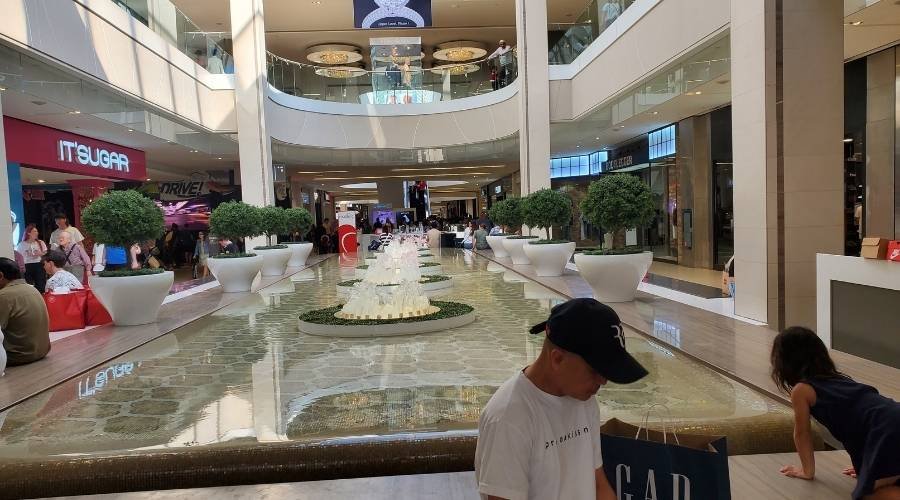 Pin
PinThere are many shopping malls in Edmonton that make the city a shopper’s paradise; it offers everything from massive malls to unique local markets. Of course, the West Edmonton Mall is the city’s most famous shopping destination in Edmonton. As I explained above, it’s one of the largest malls in the world, with over 800 hundreds of stores, restaurants, and even indoor attractions like Galaxyland and the World Waterpark.
For a more local experience, Edmonton has plenty of smaller shopping areas and boutiques. Whyte Avenue in Old Strathcona is one of my favourite spots. It’s lined with trendy shops, vintage stores, and local designers. It’s perfect if you’re looking for unique fashion or souvenirs that reflect the city’s creative side.
Edmonton’s farmers markets are a must-visit if you’re into fresh, local goods. The Old Strathcona Farmers Market is open year-round and is a great place to buy local produce, handmade crafts, and artisan goods. Another favourite is the City Market Downtown, which has been running since 1903 and is full of fresh produce, food vendors, and locally made products.
Day Trips from Edmonton
If you’re staying in Edmonton or just visiting, and looking to explore beyond the city, there are several amazing day trips nearby. One of my favourites is Elk Island National Park, just a 40-minute drive from Edmonton. It’s a great spot for wildlife viewing, where you can see bison, elk, and over 250 species of birds. The park also offers beautiful hiking trails, picnic spots, and even stargazing opportunities.
Another great day trip is the Ukrainian Cultural Heritage Village, located east of the city. This open-air museum offers a glimpse into the lives of early Ukrainian settlers in Alberta. You can walk through restored buildings, interact with costumed interpreters, and learn about the history and culture that shaped the region.
If you want to explore the charming nearby town of Edmonton, St. Albert is a fantastic choice. Known for its beautiful botanical gardens and the popular St. Albert Farmers’ Market, it’s a peaceful place to spend the day.
Weather in Edmonton
When it comes to weather, it is one of the best things I like and hate about Edmonton. The city experiences four distinct seasons, with weather that can vary quite a bit depending on when you are here. Summers are warm and perfect for exploring which is the one I love, while winters are cold and snowy, ideal for those who enjoy winter sports, but I wouldn’t say I like it lol.
Summer (June to August) is the warmest season, with average temperatures ranging from 15°C to 25°C (59°F to 77°F). On the hottest days, it can even reach above 30°C (86°F). It’s the perfect time for outdoor activities like hiking, biking, or attending one of Edmonton’s many festivals. This is my recommended time to visit.
Fall (September to November) sees cooler temperatures, ranging from 5°C to 15°C (41°F to 59°F). The leaves change colour, and it’s a beautiful time to explore the city’s parks and river valley.
Winter (December to February) can be very cold, with average temperatures between -10°C to -20°C (14°F to -4°F). Some days can get as cold as -30°C (-22°F) even more, but Edmonton’s sunny winter skies and snowy landscapes make it great for skiing, ice skating, and other winter activities in the city.
Spring (March to May) is a transition period, with temperatures ranging from -5°C to 15°C (23°F to 59°F). The snow melts, and the city begins to come alive with blooming flowers and greenery. This is allergy season. Prepare yourself if you’re allergic to pollens.
Conclusion of Edmonton Travel Guide
That’s it about this guide to visiting Edmonton. This city truly has something for everyone. From its vibrant festivals and cultural landmarks to the natural beauty of its River Valley Parks, this city is full of experiences waiting to be discovered. The city’s blend of history, outdoor activities, and modern attractions make it an exciting destination for travellers of all types.
While popular spots like West Edmonton Mall and Fort Edmonton Park are must-sees, I encourage you to explore beyond the typical tourist paths. Wander through local art galleries, visit the hidden cafes along Whyte Avenue, or take a day trip to nearby spots like Elk Island National Park. There’s so much more to Edmonton than what’s on the surface.
Whether you’re here for festivals, outdoor adventures, or a taste of local culture, Edmonton offers a unique experience that will leave you wanting more. It’s a city worth exploring in every season!
FAQs about guide to visiting Edmonton
Is Edmonton, Alberta worth visiting?
Yes, Edmonton offers a rich mix of cultural activities, natural beauty, and vibrant festivals making it a worthy destination.
What is Edmonton best known for?
Edmonton is best known for its lively festivals, the expansive West Edmonton Mall, and its beautiful river valley parks.
Is Edmonton a walkable city?
Yes, particularly the downtown area and the river valley parks are quite walkable with well-connected paths.
What is the best month to visit Edmonton, Alberta?
July is ideal for visiting Edmonton due to the warm weather and numerous festivals.
How do you spend a day in Edmonton?
Start by exploring the Art Gallery of Alberta, go for lunch in the historic Strathcona district, shop and stroll along Whyte Avenue, and finish with dinner downtown.
What are the best months to see the northern lights in Edmonton?
The best months are from October to March when the nights are longer and darker.
What are the 15-minute city rules in Edmonton?
Edmonton aims to design neighbourhoods where residents can access most of their needs within a 15-minute walk from their homes.
How many days is enough in Edmonton?
Three days are sufficient to explore major attractions, enjoy local cuisine, and perhaps catch a festival.
What is the thing you can do most in Edmonton?
Visiting West Edmonton Mall, the biggest shopping mall in North America, is a classic Edmonton experience.
[/read]

